Pictures of power: Mortality, mercy and malevolence
The mystique of the American presidency owes much to photography. Simon Royal reflects on powerful images of the past and how everything has changed in the Trump era.
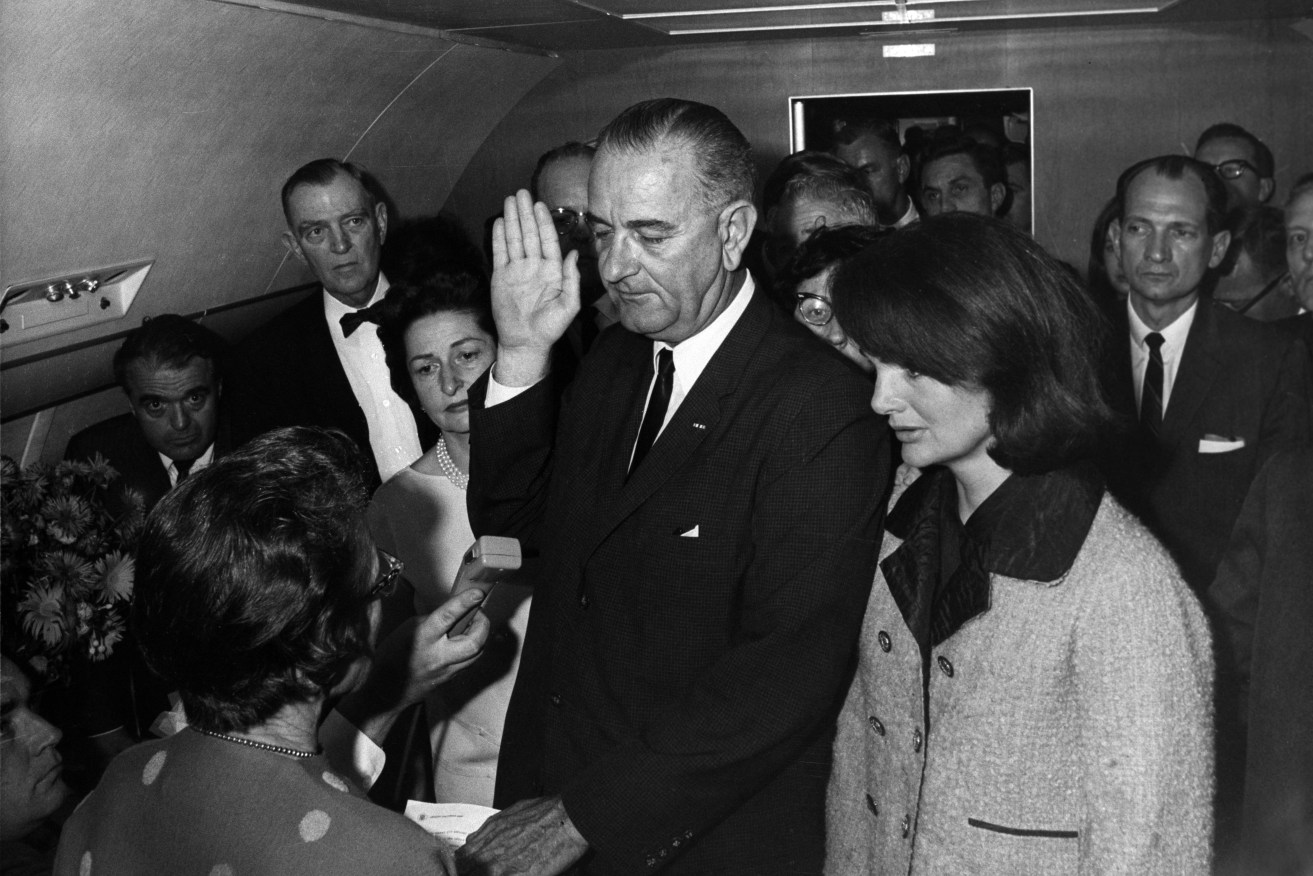
Lyndon B. Johnson taking the oath of office aboard Air Force One two hours and eight minutes after the assassination of John F. Kennedy, Dallas, Texas. Jackie Kennedy (right), still in her blood-soaked clothes, looks on.
Few Western political institutions frame themselves more perfectly for a photo than the American Presidency. In one sense that’s hardly surprising, given the office and the technology largely grew up together. They also share at least a veneer of democratic sensibility – anyone can become POTUS, anyone can take a photo. It helps, too, that power does so love a nice picture of itself.
William Henry Harrison, the 9th president, was the very first incumbent to be photographed. It happened immediately, but not swiftly, after his inauguration in January 1841. According to popular myth, Harrison’s historic happy snap came, unfortunately, with a most unhappy ending – death by daguerreotype. The newly minted president, the story goes, had to linger in the cold so long for the photographic process to be completed that he caught pneumonia – a condition that led to his death, a mere 31 days into his presidency. It remains the shortest tenure in American history, and Harrison also holds the mantle of the first president to die in office. Nevertheless, it’s not a bad set of records for just over a month’s work, even if the price was rather high.
From FDR sitting in his limousine, grinning ear to ear as he faced down economic catastrophe, and then fascism, to JFK smiling in the sun as his gunmetal grey Lincoln cruised into Lee Harvey Oswald’s crosshairs, presidents have provided some of political photography’s most memorable images.
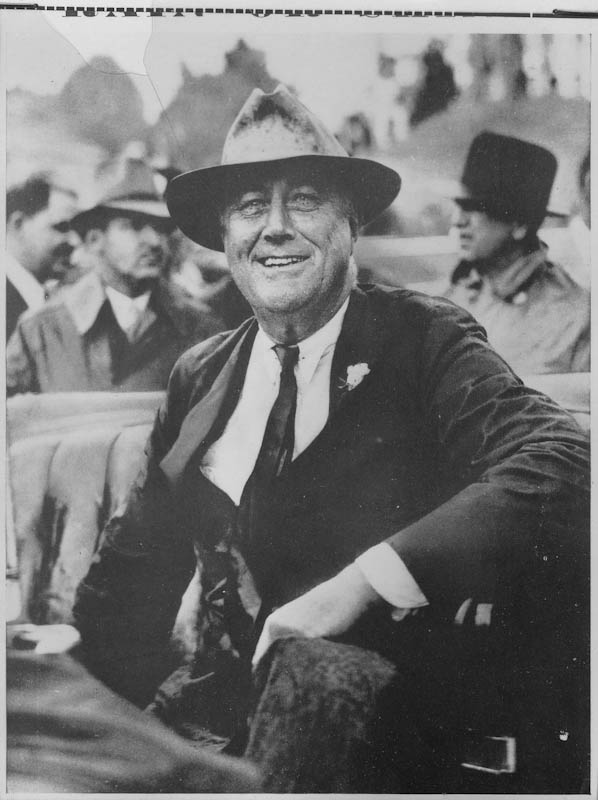
A smiling FDR navigated the US through the worst economic crisis in its history.
As have their widows.
Less than two hours after JFK’s murder, Lyndon Johnson took the oath of office aboard airforce one. Mrs Kennedy, still wearing her blood-spattered pink suit, stood by LBJ’s side. But despite the formalities, the Kennedy presidency was far from over. At moments of crippling disaster, or grief, or fear, one of the key roles of a leader in a democracy is to comfort, and heal, and provide a beacon of calm in the chaos. For three days, until JFK’s burial, that task remained firmly in the hands of another Kennedy – Jackie.
Much more than the mere subject of photographs from that time, Jackie was their architect. From whispering to John junior to salute his father’s coffin, to the riderless horse prancing behind the caisson, to the eternal flame at the gravesite – it was all Jackie.
Undiminished by more than half a century, those images show the tremendous potency and lasting influence of a great photo. In short, they are Jackie’s essay on leadership.
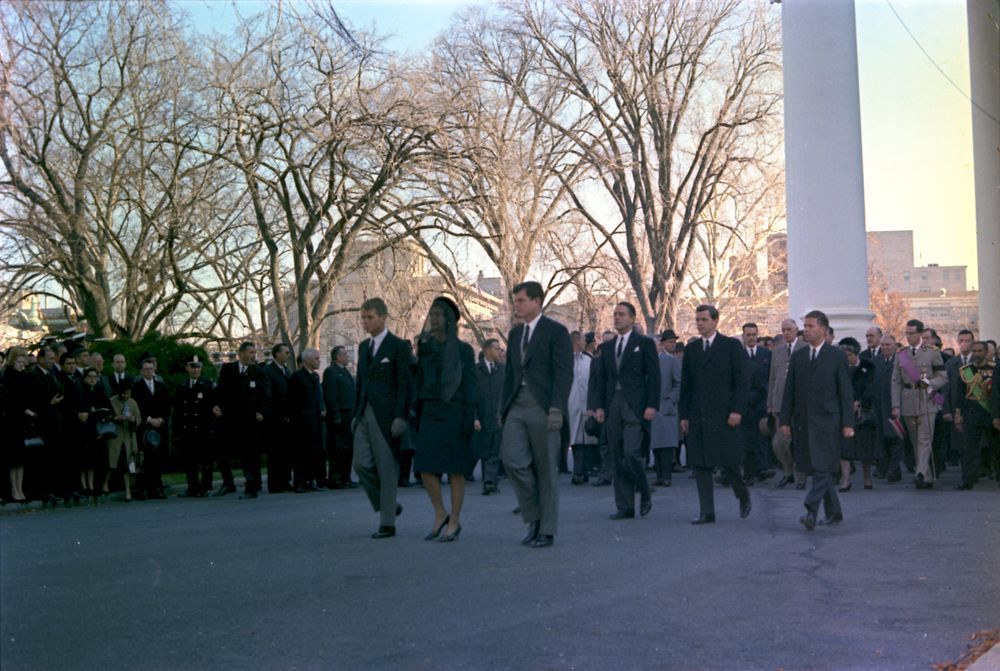
Jackie Kennedy walks down the White House drive on November 25, 1963. Photo: Robert Knudsen, JFK Library Boston, Mass
Obama jogging casually with his dog down a White House corridor. The undisguised shock on George W Bush’s face upon learning of the attack on the twin towers. Ronald (and Nancy) Reagan embracing the families of the lost Challenger crew. The people in these pictures occupied the same oval office, but their politics and values were diametrically opposed. The same can be said of us – the audience – who contemplates those pictures. Though at first blush the differences might appear great, they are small compared with what’s the same.
There’s a common quality shared by, and essential to, the creation of great presidential photos. Indeed, any photo, really. It’s called empathy.
One of the many casualties of the strange and bewildering times through which we are passing is the dearth of pictures made with that quality.
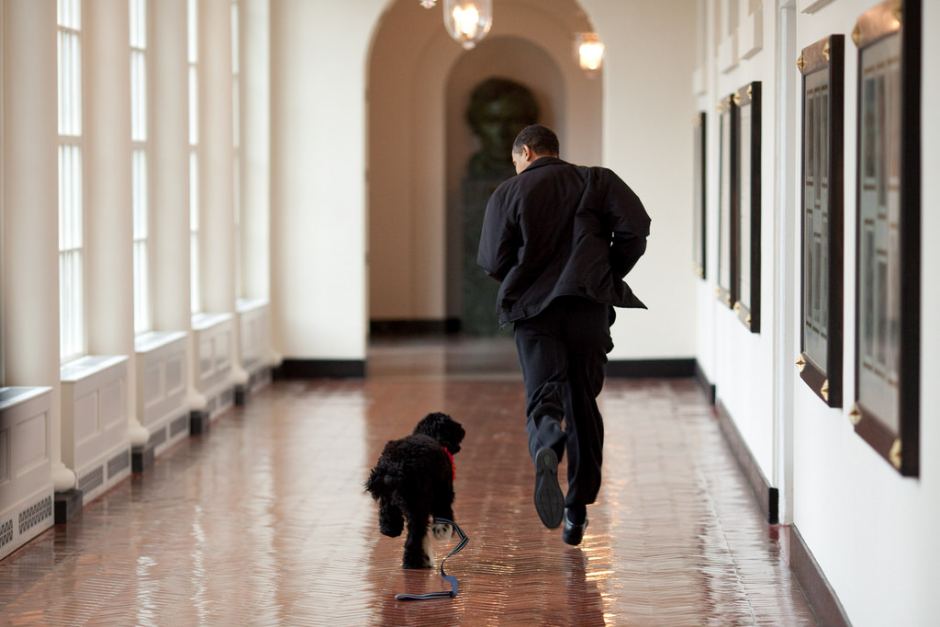
President Barack Obama runs down the East Colonnade in the White House with family dog, Bo. Official White House photo by Pete Souza
It seems that Donald Trump would rather have his photo taken alone, giving the thumbs up, over a can of beans than be snapped comforting a fellow human being.
There’s no picture I can recall of Trump looking vulnerable, as George W did, when catastrophe overtook the country. There are few images of the President offering a soothing arm around the shoulders, as Obama offered the relatives of the slaughter at Sandy Hook. There are none that I’ve seen of Trump offering tears, as Obama did for those murdered children.
It’s not as though there hasn’t been a chance or 100,000. This ghastly plague year, combined with Trump’s own incompetence, has provided what spin doctors call a wealth of picture opportunities. The rest of us would call them unnecessary tragedies. The reason Trump hasn’t authentically performed the ‘Comforter in Chief’ aspect of his job is twofold and simple – he doesn’t do empathy. And, more to the point, his power and influence stem not from drawing people together, but dividing them.
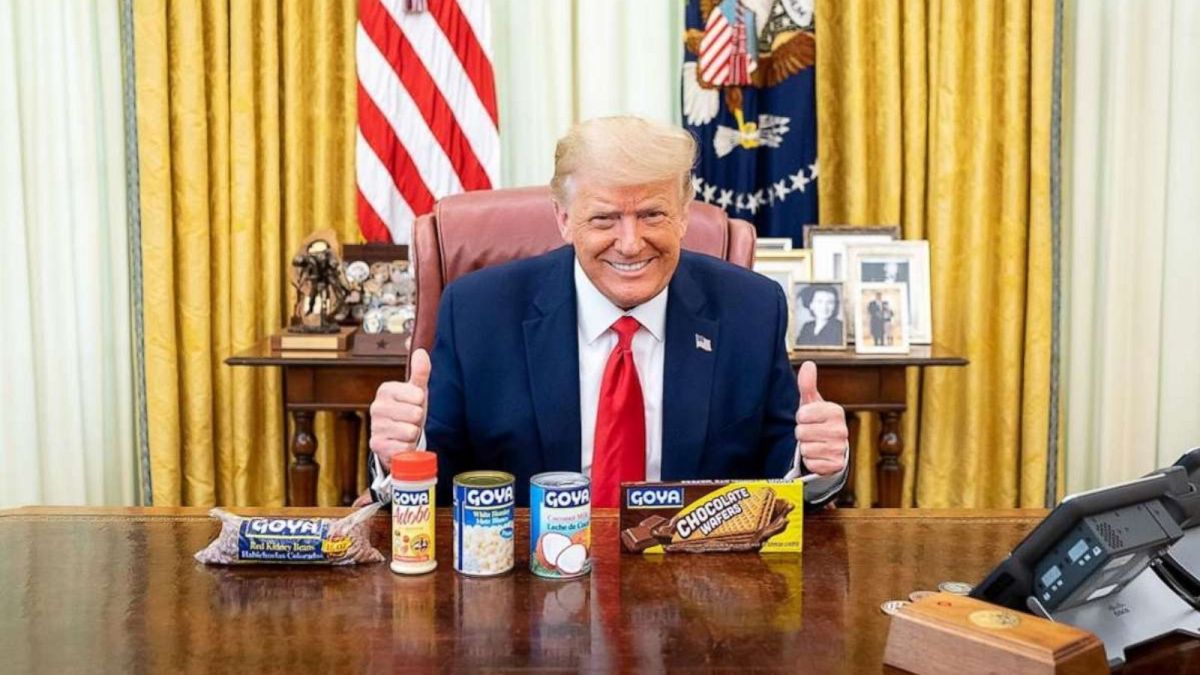
President Donald Trump with Goya products – a photo he posted on social media as a political statement. There have been calls for a boycott of Goya after the company’s CEO, Robert Unanue, praised the President.
So what then will be the definitive photograph of these years? Trump’s critics, of course, would be delighted with a mugshot. Who knows, it may yet come to that. In the meantime, though, the recent spectacle of President Trump standing in front of a church he’s never attended, holding a book he’s likely never opened, must be a strong contender.
It’s no accident that the other presidential photograph Trump’s Bible stunt most closely resembles comes from Richard Nixon. In 1974, as number 37 left the White House in disgrace, he flashed a version of Winston Churchill’s famous ‘V’ for victory sign. The president who undermined democracy pilfering the repertoire of the Prime Minister who saved it. I guess Nixon had already metaphorically given his country the middle finger.
Arguably the most compelling, if that’s the right word, image of Trump isn’t a still photograph but a short piece of vision. It’s from his campaign rather than his presidency. At one of his rallies in 2015 candidate Trump mocked the appearance of a reporter with a disability. As Trump jerked his body around, flailing his arms, the audience let out appreciative guffaws. It was a crude imitation of New York Times reporter, Serge Kovaleski, who has arthrogryposis – a condition that affects the joints.
All of this from a man whose lifestyle choices have lent him the appearance of an iridescent bung fritz.
Donald Trump is not a kind person.
Of all his litany of flaws, it’s Trump’s lack of empathy that is most striking and, for this president’s fellow Americans, is proving far more costly than just the paucity of pretty pictures.
Simon Royal is a journalist with the ABC in Adelaide.




